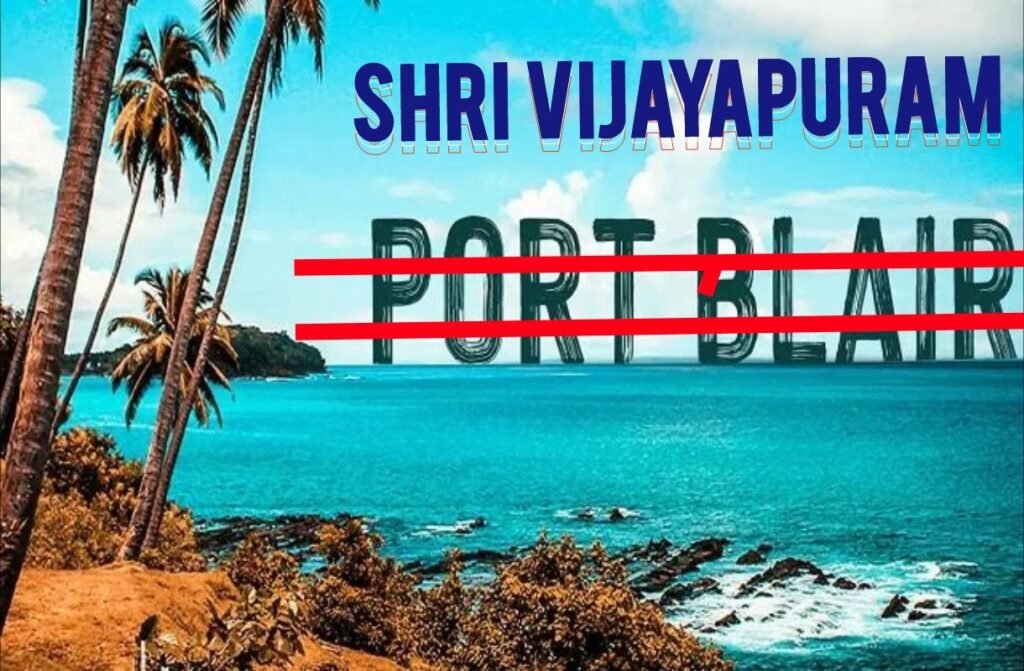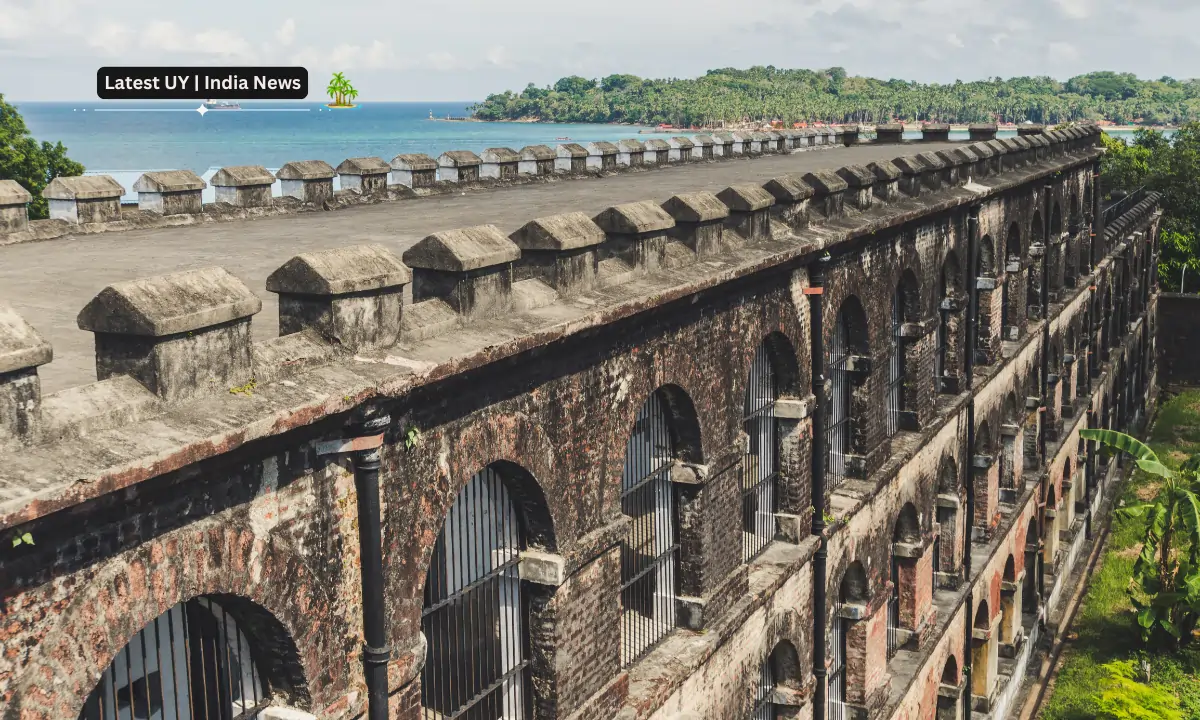Renaming of Port Blair: On September 13, Friday, the Government of India announced the historic decision of renaming of Port Blair which is the capital city of the Union Territory of Andaman and Nicobar Islands. The renaming of Port Blair as Sri Vijaya Puram marks a shift from India’s colonial legacy. The Union Home Minister, Amit Shah, took to his X (formerly Twitter) handle to declare the decision in a post.

Image Credit | @djrohitNtimes | X
The History of Port Blair
The renaming of Port Blair assumes greater significance if one takes a closer look at the history of Port Blair. The capital city of the Island Union Territory is tainted with a violent colonial past. It was first surveyed in 1789 with the aim of establishing a penal colony. In the aftermath of the Sepoy Mutiny of 1857, the British Empire formally set up the Cellular jail on the island specifically for political prisoners. The prison housed many notable freedom fighters, including Yogendra Shukla, Batukeshwar Dutt, and Vinayak Savarkar. The prisoners were subjected to brutal punishment, heinous torture, and forced labour by the colonial authority and faced death by hanging in most cases.
Port Blair is also the place that witnessed the first unfurling of the National Flag by Netaji Subhash Chandra Bose on December 30, 1943. Referring to the historical and contemporary importance of the place, the Minister, in his X post, said, “The island territory that once served as the naval base of the Chola Empire is today poised to be the critical base for our strategic and development aspirations.”
Who was Blair?
While the renaming of Port Blair as Sri Vijaya Puram is done to eradicate British colonial imprints, it is important to know the colonial legacy associated with the man after whom the island was named in the first place.
Chatham Island, a fishing island in the southeast bay of Greta Andaman, was named Port Blair in 1789 after a British Naval officer named Lieutenant Archibald Blair, who was associated with the Royal Navy during the 18th century. Blair had a pioneering role in laying the foundation of administration on the island by extensively mapping and surveying it.
As the British were looking for unexplored territories to set up their penal colony, Chatham Island was uncharted till then. The colonial administration of then-British India wanted to honour him for his immense contribution to the colonial expansionist project.

Image Credit | @TheChronology__ | X
Why is the renaming of Port Blair taking place now?
During the Prime Ministerial address from the ramparts of the Red Fort to the nation on India’s 76th Independence Day, Narendra Modi conceptualised the idea of “Panch Praan” for the next 25 years, termed the Amrit Kaal. While introducing the second Praan Shakti, he said, “In no part of our existence, not even in the deepest corners of our mind or habits, should there be any ounce of slavery… We have to liberate ourselves from the slavery mind set, which is visible in innumerable things within and around us. This is our second Praan Shakti.”
The renaming of Port Blair is, therefore, a significant step, keeping in line with this vision of ensuring the unshackling of any type of colonial bond. In fact, the Home Minister’s post reiterates this vision of the PM and explicitly mentions the reason as “to free the nation from the colonial imprints”.
What is the significance of the new name?
Vijay literally translates to victory in most Indian regional languages, and therefore, the name offers a tribute to India’s glorious history of struggle for independence that ultimately led the country to achieve victory from centuries of colonial rule. In the words of the Home Minister, “While the earlier name had a colonial legacy, Sri Vijaya Puram symbolizes the victory achieved in our freedom struggle and the A&N Islands’ unique role in the same.”
Another distant historical connection can be drawn from the Srivijaya empire, which was a maritime kingdom in present-day Indonesia that prospered between the 7th and the 13th centuries. The maritime empire also dominated international trade through its established sea routes that enabled it to have extended trade relations with India. Mahayana Buddhism, a popular sect of Buddhism, was also a connecting link between the Srivijaya Empire and India.

Image Credit | @Brahmanandhi | X
What are the other places that were renamed earlier?
Apart from iconic monuments, the Government of India has renamed certain crucial roads whose original names bore clear reference to the British era. The Race Course Road in Lutyen’s Delhi is one such example which was renamed to Lok Kalyan Marg in 2016. Accordingly, the Prime Minister’s famous residential address, 7, Race Course Road, underwent a change as it came to be known as 7, Lok Kalyan Marg from then onwards. Similarly, in 2017, Dalhousie Road was relabelled as Dara Shikoh Road.
Another vestige of colonialism was removed when the iconic Rajpath, formerly called the Kingsway, which connects Rashtrapati Bhavan to India Gate and witnesses the Republic Day Parade every year on January 26, was renamed as Kartavya Path, symbolizing the democratic values enshrined in the heart of the nation. The renaming also signifies that ultimate power rests with the people and not the Imperial monarch, and therefore, they are the ones who should reclaim the way.
What are other steps undertaken by the Union Government to shed off its colonial legacy?
Apart from the renaming of Port Blair, the Government of India has undertaken a number of initiatives to unshackle itself of its colonial past. On September 2, 2022, on the occasion of commissioning India’s first indigenous aircraft carrier, INS Vikrant, Prime Minister Narendra Modi unveiled the new ensign for the Indian Navy, replacing the Saint George’s Cross, with Nishaan which is inspired by the royal seal of Chhatrapati Shivaji Maharaj. Later, on the Navy Day observed on December 4, 2022, the Hon’ble President of India approved the introduction of a new design for the President’s Standard and Colour and Indian Navy Crest for the Indian Navy.
In addition to that, during India’s celebration of 75 years of independence as Azadi ki Amrit Mahotshav, the Union Government, in order to shed off the vestiges of India’s colonial past, has undertaken numerous symbolic steps. PM Narendra Modi renamed the Rajpath in New Delhi as the Kartavya Path on September 08, 2022. On the same day, a statue of Netaji Subhas Chandra Bose was installed near India Gate, which replaced the statue of King George V.
Besides, 2019 marked a dramatic shift in India’s presentation of the Annual Financial Statement, popularly called Budget, in the Parliament when Finance Minister Nirmala Sitharaman chose the traditional Indian’ Bahi Khata’ instead of the briefcase, ditching the long-held colonial tradition of presenting the Union Budget.
Earlier, Ross Island, Neil Island and Havelock Island of the Andaman and Nicobar Archipelago were renamed as Netaji Subhas Chandra Bose Dweep, Shaheed Dweep and Swaraj Dweep respectively on December 30, 2018. Renaming of Port Blair after six years follows this very trend.
What are the implications of such a move?
The renaming of Port Blair along with India’s iconic monuments and places is a symbolic gesture that is sparked off from the desire to reclaim its glorious past by marching past the dark days of British colonial rule that etched a deep scar in the history of one of the earliest civilizations. Renaming of Port Blair also marks India’s sincere effort to establish the emerging idea of a New India which is characterized by Atmanirbharata or self-dependence and confidence.
FAQ
Why in the News?
On September 13, Friday, the Government of India announced the historic decision to rename Port Blair which is the capital city of the Union Territory of Andaman and Nicobar Islands. The renaming of Port Blair as Sri Vijaya Puram marks a shift from India’s colonial legacy.
Who was Blair?
Archibald Blair was a British Naval Officer serving the Royal Navy during the 18th century. Blair had a pioneering role in laying the foundation of administration on the island by extensively mapping and surveying it.
Why is the renaming of Port Blair taking place now?
During the Prime Ministerial address to the nation on India’s 76th Independence Day, Narendra Modi conceptualised the idea of “Panch Praan” for the next 25 years, termed as the Amrit Kaal and urged citizens to liberate themselves “from the slavery mind set”. The renaming of Port Blair is in line with this vision.
What is the significance of the new name?
Vijay literally translates to victory in most Indian regional languages and therefore, after renaming of port blair the name offers a tribute to India’s glorious history of struggle for independence that ultimately led the country to achieve victory from centuries of colonial rule.
What are the other places renamed earlier?
The Race Course Road in Lutyens Delhi was renamed Lok Kalyan Marg in 2016. Similarly, in 2017, Dalhousie Road was relabelled as Dara Shikoh Road. The Rajpath that connects Rashtrapati Bhavan to India Gate was renamed as Kartavya Path in 2022.
What are other steps undertaken by the Union Government to shed off its colonial legacy?
On September 2, 2022, during the commissioning of India’s first indigenous aircraft carrier, INS Vikrant, PM Narendra Modi unveiled the new ensign for the Indian Navy, replacing the Saint George’s Cross with Nishaan, which is inspired by the royal seal of Chhatrapati Shivaji Maharaj. Renaming of Port Blair is one such move.
What are the implications of such a move?
The renaming of Port Blair along with India’s iconic monuments and places is a symbolic gesture that sparked off from the desire to reclaim its glorious past by marching past the dark days of British colonial rule that etched a deep scar in the history of one of the earliest civilizations.


